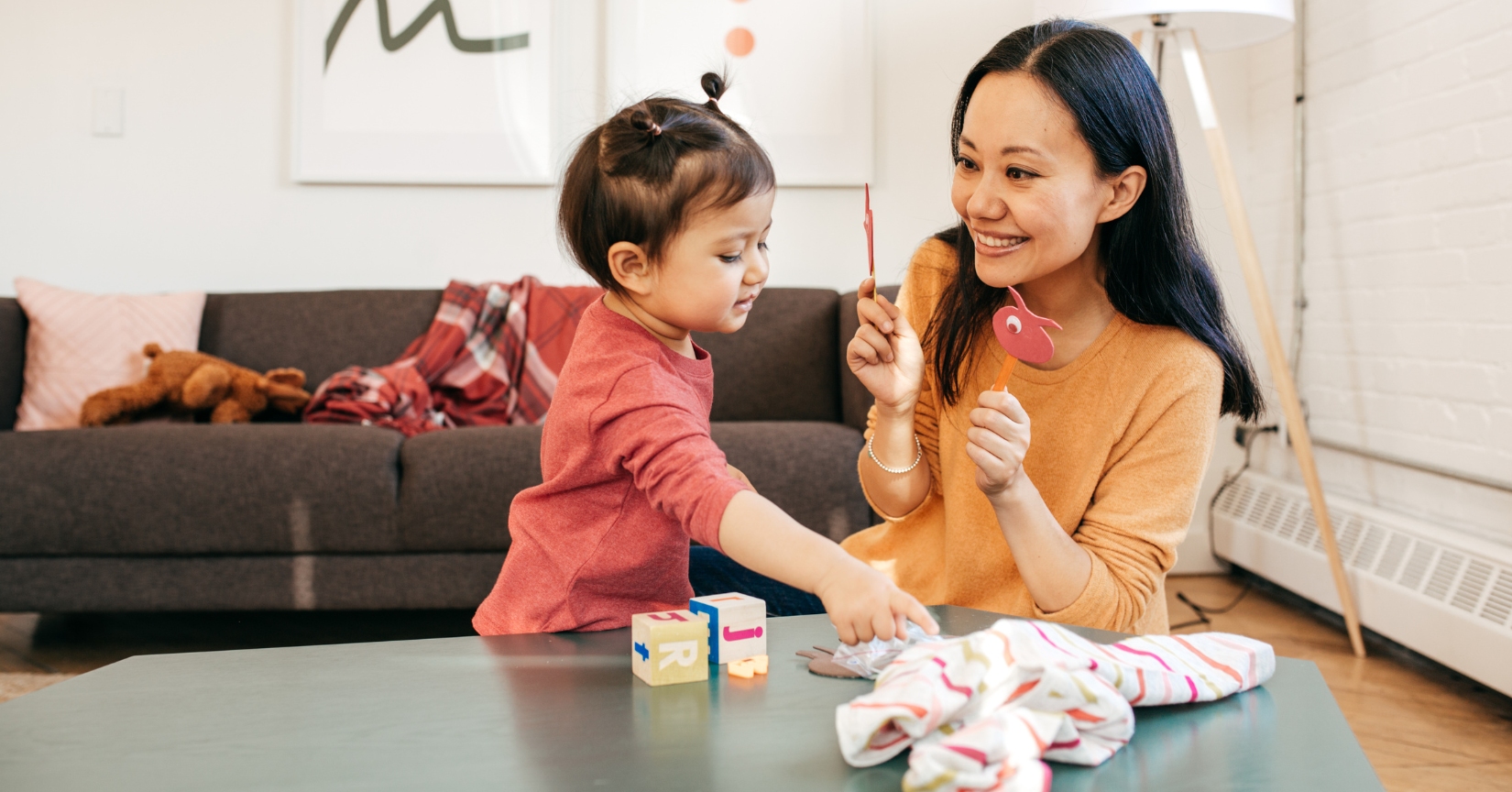As a parent, there’s nothing quite like that magical moment when your toddler utters their first words.
However, encouraging them to continue and expand on their verbal skills can sometimes be a bit of a challenge.
Trust me, I’ve been there. You start to wonder, “How can I get my little one to talk more?”
Well, you’re not alone in this journey and I’m here to share some effective strategies with you.
In this article, we will explore 9 effective ways to encourage your toddler to talk more.
Drawing from my own experience and some well-researched strategies, we’re going to delve into simple yet powerful techniques that can stimulate your toddler’s language development.
Every child is unique and learns at their own pace, but these tips will surely give you a head start in fostering effective communication skills in your little one.
1) Engage in Interactive Play
In the world of child development, playtime isn’t just about fun and games.
Far from it.
Engaging in interactive play with your toddler can be a powerful tool for language development. It’s during these playful moments that your little one can pick up new words and phrases.
You see, children learn best through interaction and repetition. And what better way to provide this than through play?
Take this scenario: You’re playing with toy animals and you start to make the corresponding animal sounds. It might seem simple, but trust me, it’s effective.
Your toddler is not just hearing the sounds, but they’re associating them with the respective animals. This is an early form of language acquisition.
And the beauty of it? You’re teaching your child to talk more, you’re creating a bond and making beautiful memories along the way.
2) Harness the Strength of Positive Reinforcement
Now, let’s talk about a psychological concept that’s been widely used in various aspects of child development: positive reinforcement.
In a nutshell, positive reinforcement is about encouraging a specific behavior by giving a reward when the behavior is exhibited.
Sounds simple, right? But trust me, it’s incredibly effective when used correctly.
Here’s how it works. Let’s say your toddler tries to say a new word – it might not be perfect, but they’ve made the effort. Celebrate this attempt! Show your excitement, give them a big smile, or even a little clap.
This positive reaction from you acts as a reward for your toddler. And guess what happens next?
Your toddler is likely to repeat that behavior – in this case, trying to say new words – in order to receive that reward again.
In essence, you’re creating a positive feedback loop that encourages your toddler to talk more.
3) Embrace the Silence
Now, here’s a strategy that may seem a bit counter-intuitive given our goal: embracing the silence.
After discussing the power of positive reinforcement, you might think the key is to constantly engage your toddler in conversation. But sometimes, it’s in the quiet moments that your little one finds their voice.
Think about it. When we fill every silence with chatter, we’re not leaving any room for our toddlers to chime in.
So try this: after you’ve asked your child a question, let the silence linger a little. This gives your toddler the time and space they need to process the question and formulate a response.
Language development isn’t a race. It’s about giving your toddler the right opportunities and environment to learn at their own pace.
This strategy of embracing the silence complements our previous point about positive reinforcement beautifully, creating a more holistic approach to encouraging your toddler to talk more.
4) Exemplify the Impact of Role Modeling
Ever noticed how children seem to mimic everything we do?
This is because, as parents, we are our toddlers’ first and most influential role models. Every word we say, every action we take, they’re watching and absorbing it all.
And guess what? This natural inclination to imitate can be a powerful tool to encourage your toddler to talk more.
When you intentionally model good speech practices – speaking clearly, using a varied vocabulary, even narrating your daily activities – you’re providing your little one with a living language lesson.
Your toddler will naturally start to mimic the way you talk, the words you use, and even the tone of your conversation.
The goal isn’t solely to instruct in vocabulary but also to demonstrate effective communication. And there’s no better way to do this than by leading by example.
5) Create a Language-Rich Environment
Here’s a strategy that is simple, yet often overlooked: creating a language-rich environment for your toddler.
The environment in which your child spends their time plays a crucial role in their language development.
So, what does a language-rich environment look like? Here are a few elements:
- Books, books, and more books.
- Labels on everyday items around the house.
- Music and songs that encourage sing-alongs.
- Puzzles and games that promote conversation.
These might seem like simple additions to your home, but they can have a profound impact on encouraging your toddler to talk more.
And the best part is that these elements can be seamlessly integrated into your daily routine.
6) Master the Skill of Listening
I’ll be the first to admit, as parents we often find ourselves juggling a million tasks at once. This can sometimes make it difficult to give our full attention when our little ones are trying to communicate with us.
However, by truly listening when our toddlers attempt to talk, we’re showing them that their words have value. That their voice matters.
Let’s try this: the next time your toddler begins to speak, even if it’s just babbling, stop what you’re doing and listen attentively. Respond with interest and engage in the conversation.
This simple act of active listening creates a positive communication environment that encourages your toddler to express themselves more.
I can’t stress enough how significant this strategy is in encouraging your toddler to talk more.
7) Expand on Existing Vocabulary
Imagine this: your toddler points at a ball and says, “Ball!”
What’s your response? Do you simply confirm with a “Yes, that’s a ball”?
While this acknowledges their effort, there’s an opportunity here to expand on their existing vocabulary.
How about responding with something like, “Yes, that’s a big, red ball!”?
In this scenario, you’re not just confirming their words, you’re introducing new ones. By adding adjectives and colors to the conversation, you’re slowly but surely building your toddler’s language skills.
This strategy of expanding on existing vocabulary can be applied in everyday conversations with your toddler. It’s about seizing the learning opportunities that present themselves in everyday interactions.
8) Utilize the Strength of Storytelling
Storytelling is a timeless tool for communication, and it holds significant power in encouraging your toddler to talk more.
I remember when my little one was just starting to talk. Every night, as part of our bedtime routine, I would tell her a simple story.
At first, she would just listen, captivated by the characters and the plot. But over time, she started to chime in, adding her own little twists to the tale.
This personal experience taught me a valuable lesson: storytelling does more than just entertain; it engages.
When we involve our toddlers in storytelling, we’re not just improving their language skills. We’re sparking their imagination, teaching them about structure and sequence, and showing them the fun side of communication.
So go ahead, weave those magical tales and watch as they inspire your toddler to express themselves more.
9) Endure with Patience
As we reach our final point, there’s one essential element that ties all these strategies together: patience.
When it comes to encouraging your toddler to talk more, patience isn’t just a virtue; it’s a necessity.
Every child is unique and develops at their own pace. Some toddlers may start talking earlier, while others might take a little more time.
So while you’re implementing these strategies, remember to be patient with your little one and with yourself.
You’re doing an amazing job, and with time, you’ll see the fruits of your efforts.
What’s Next in Your Toddler’s Language Journey?
Now that we’ve explored various effective ways to encourage your toddler to talk more, what’s the next step in your child’s language development journey?
It’s important to keep in mind that language development doesn’t stop with speaking. As your toddler grows, their communication skills will continue to evolve and expand, encompassing areas like:
- Reading comprehension
- Writing abilities
- Non-verbal communication
- Listening skills
These are all integral components of effective communication, and as parents, our role is to guide our little ones through each of these stages.
So as we end this article, I encourage you to reflect on the strategies we’ve discussed today. Think about how you can incorporate them into your toddler’s daily routine and remember, every step – no matter how small – is progress in your toddler’s language journey.
As you embark on this adventure of nurturing your toddler’s language skills, remember this: the patience, effort, and time you invest now will lay a strong foundation for your child’s future communication abilities. And that, dear reader, is a gift beyond measure.







